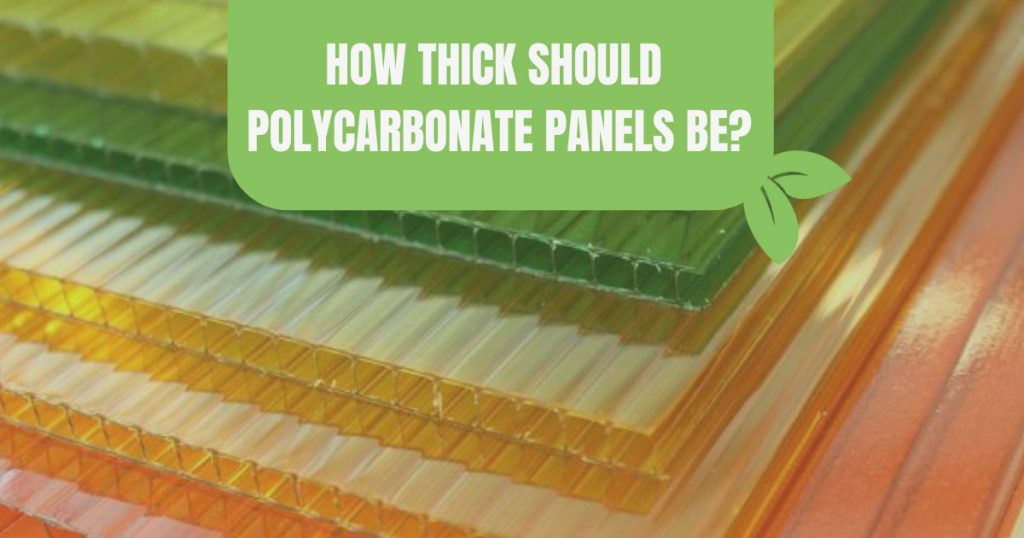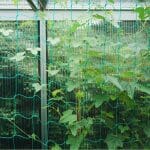
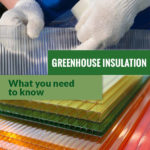
While it is without argument that a property with a greenhouse looks more aesthetically pleasing than one without, the main reason why someone would have a greenhouse is to protect their plants from the harsh elements in every season. Insulation is one of the most important features of every greenhouse since we want as much energy that goes into the structure to remain inside. So, what do you need to know about greenhouse insulation?
The importance of knowing about greenhouse insulation
Heating costs reduction along with higher levels of efficiency are the chief benefits gained with great greenhouse insulation. It becomes even more important when you need to maintain a higher temperature to counteract the coldness of your location.
There are a few factors that affect the insulation value of a greenhouse kit. Before you purchase one, make sure you check the Polycarbonate quality and seals. You should also think about how you want the foundation. In addition, there are also ways of insulating your existing greenhouse in case it doesn’t have a good insulation value.
What is considered good greenhouse insulation?
Good insulation is what provides your plants with a controlled environment that will ensure the perfect temperature and humidity for your plants. Regardless of the design of the greenhouse, proper insulation will not only save your precious plants but significantly cut down on your energy expenditure. Let’s take a closer look at every piece of the greenhouse that is part of good insulation.
Polycarbonate
The Polycarbonate sheets have gained a solid reputation these days. It has a wide range of benefits, especially in greenhouse insulation. It is lightweight, UV-resistant, flexible, and virtually unbreakable. Polycarbonate maintains its great qualities in temperatures below -40°F and as high as 284°F.
Poorly insulated sidewalls and roofs are the main reason for heat loss. Therefore, picking the right glazing is important for greenhouse insulation.
Most of the Polycarbonate types are built with air pockets by utilizing hollow multi walls. The air inside the panels provides a higher insulation factor. Twin-walled panels are commonly used for greenhouse thermal insulation purposes. If you need more insulation, you should look for greenhouses with triple-walled sheeting because it provides superior strength and excellent heat retention. There are also thin-walled panels offering durability, light diffusion, and decent insulating values, but if you are concerned about insulation, always go for the twin- or triple-walls.
The amount of insulation you need depends on several factors like climate, location, amount of ventilation, etc.
You need to consider the light transmission and insulation at the same time. The thicker the Polycarbonate, the lower light transmission you get. A thicker layer will enhance the thermal insulation by roughly 30%, but it will also decrease the light transmission by around 10%.
The polycarbonate’s panel quality is determined based on its R-value. The R-Value is used to measure the insulating capability. A higher value means greater insulation benefit. The K-Value or the thermal conductivity is the capacity of a material to conduct heat. A lower K-Value means the material provides more insulation. It measures the quantity of heat or the BTUs per hour that is transmitted within one square foot of one-inch thick insulation.
Check out the table below to get a rough idea of the panel types and its insulation values:
| Polycarbonate | R-Value | K-Value |
| 10mm twin-wall Polycarbonate | 1.89 | 4.55 |
| 8mm twin-wall Polycarbonate | 1.60 | 4.76 |
| 6mm twin-wall Polycarbonate | 1.54 | 5 |
| 4mm twin-wall Polycarbonate | 1.43 | 5.27 |
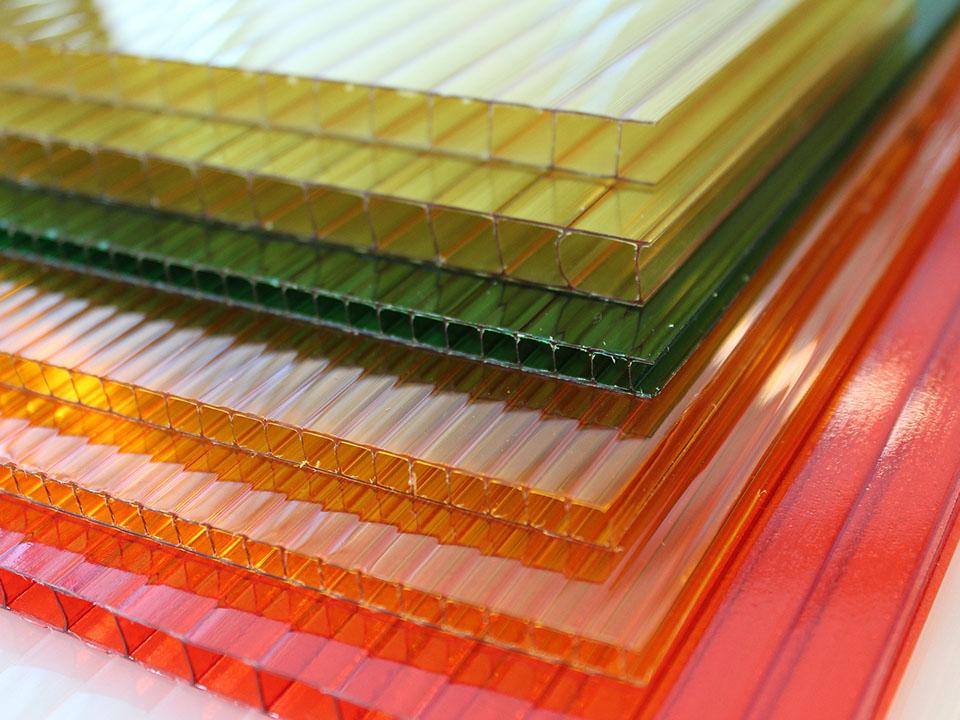
Insulation seals
The warmth that has built up throughout the daytime can be confined inside the greenhouse overnight. That’s when the seals between frame and panels come into play. Some greenhouses have rubber seals or silicone sealant in order to prevent heat loss. Some DIY gardeners cover the holes using tape, but that is only a temporary solution against drafts.
The permanent solution against drafts is using a silicone sealant to fill in the cracks on the corners of the frame. Vents, windows, and doors need rubber seals or glazing strips to make them close snugly. It is imperative that drafts are blocked as they can do irreparable damage to the plants if left unchecked.
In addition, you should always maintain your greenhouse seals. Check and repair any panes, holes, and gaps once or twice a year. Make sure that the doors and vents are intact so that the heat will not escape.
Planting during the winter season is easy and stress-free when it’s done in a greenhouse. Early crop harvest is the ultimate reward for planting during the winter. When planting during the winter it is your goal to make sure that plants remain snug and warm on very cold days so a well-insulated greenhouse is a must.
Does the foundation affect greenhouse insulation?
Greenhouse foundations are sometimes overlooked when discussing insulation. Remember that when the outside ground freezes just like the air, those frosty temperatures will enter the greenhouse through your ground foundation. It can lose around 15% of heat through the ground. Stopping this heat loss is more crucial for greenhouses which have crops directly planted in the ground or raised beds because you need to protect their roots.
If you don’t want to install foundation insulation (read below), you can also prevent heat loss with the right foundation type. We advise using gravel, dirt, or peat rock. Don’t set up your greenhouse on cement/concrete or wood, because it provides poor insulation.
Advanced steps for insulating the greenhouse foundation
You can simply install ground insulation throughout the perimeter of your greenhouse by building a pocket of insulating soil. The soil beneath the frost line already has a permanent year-round warmth because of the geothermal energy. It is a thermal mass reservoir that collects heat and gradually releases it later.
You can insulate your greenhouse’s outdoor border with some Styrofoam board (about 2in thick) or foam. It needs to be arranged vertically and reach down to at least one foot. If you live in Zone 4 or less you may want to dig a deeper foundation. Place the board against the surface of your greenhouse foundation.
What if you have no foundation or stem wall to install vertical insulation? No worries, you can still insulate the ground horizontally by installing a “Swedish Skirt”.
For more information on these two types, read this article.
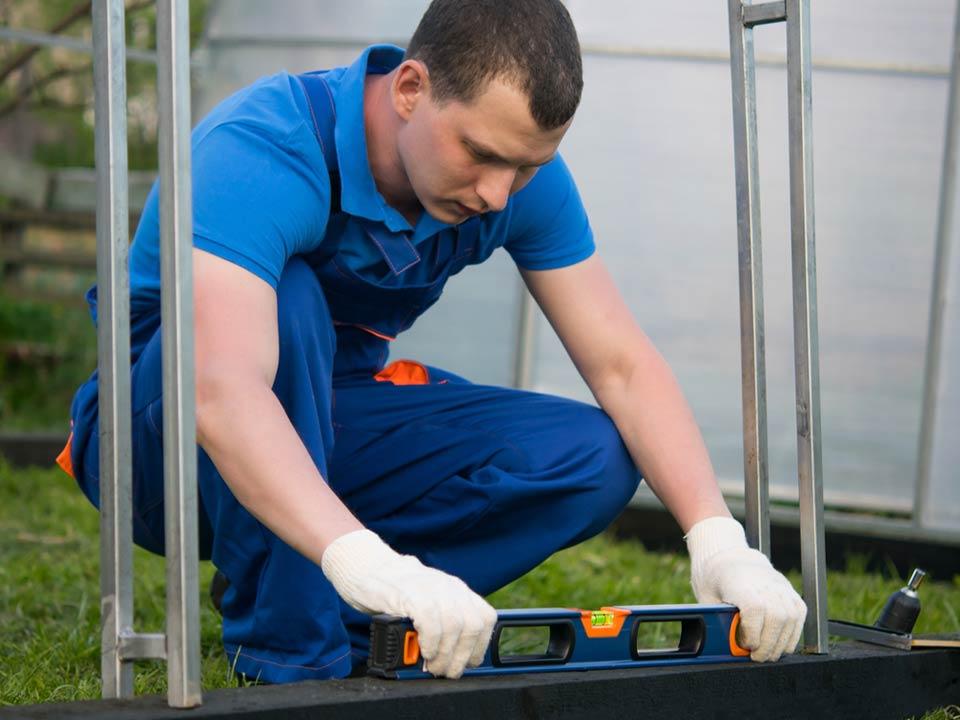
Bright ideas: What You Need to Know about Greenhouse Insulation
Blocking drafts is the first step to do before insulating the greenhouse. This means that vents and doors should fit securely, gaps in the frame are sealed, and all broken panes are replaced.
Additionally, make sure that your ground covering is tucked nicely on all ends of your greenhouse. The few yards of covering you may have saved on the edges might come up to cost you severalfold both when it comes to heating and weeding.
Double glazing & the good old bubble wrap
One of the inexpensive but effective ways to create a double glaze on the greenhouse is lining the whole area with plastic. Doing this will reduce the rate of heat escape and seal off air gaps as well.
Double glazing can also be installed during the building of the greenhouse. It can be an expensive project, but it’s worth the money.
Good old bubble wrap is an inexpensive go-to insulation material for double glazing. Choose bubble wraps with larger bubbles because it also provides more light access. The bubble wrap used in wrapped purchases may do the job, but the best ones are the horticultural bubble wraps that are purposely made for greenhouse insulation.
Another thing gained by going with the horticultural bubble wrap is its UV feature. This feature ensures long-lasting insulation compared to the ordinary bubble wrap. However, if you happen to have a lot of ordinary bubble wrap lying around, it can be an inexpensive way of sealing off air gaps.
When the greenhouse frame is made of wood, the best way to attach the bubble wrap is to use either a staple gun or drawing pins. Greenhouse clips are needed to attach the bubble wrap to an aluminum frame. Don’t forget the roof, it also needs bubble wrap insulation.
The bubble wrap can also be used to section off areas for large greenhouses that only need specific areas for winter planting. Using either a plastic or bubble wrap can serve as an effective screen divide for the plants from the rest of the area.
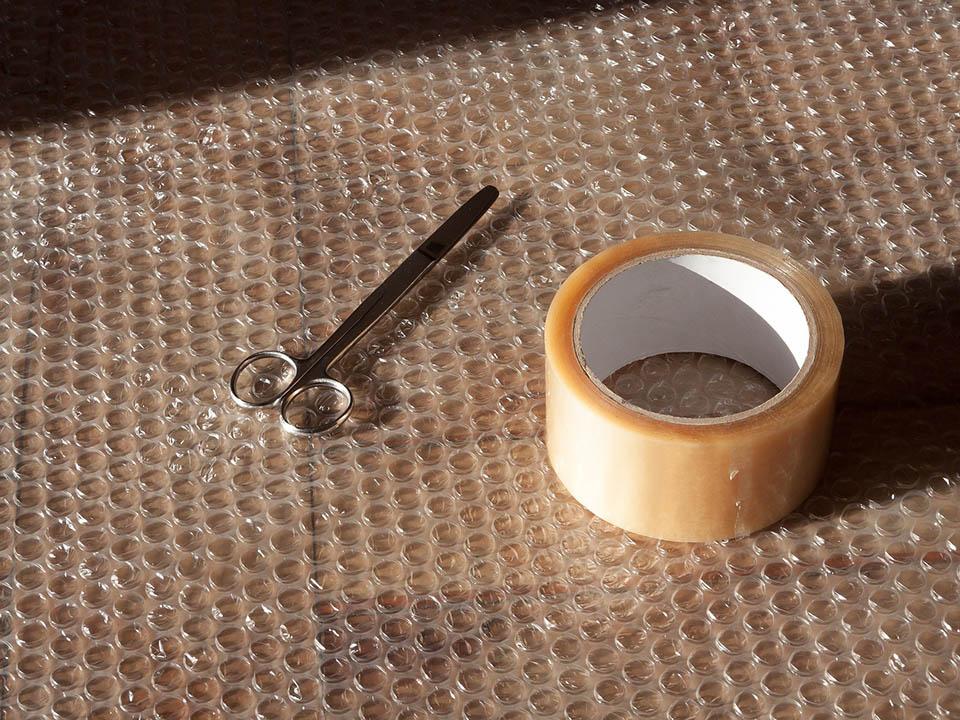
Reflective insulation
The main purpose of reflective insulation is to lessen radiant heat transfer over those free spaces, which is a significant contributor to heat increase in summer and heat loss in winter. These are designed to give a remarkably efficient, affordable way to help maintain BTUs. It prevents mold, mildew, bugs, and rodents.
Thermal insulation foil for the north side of the greenhouse
Using thermal insulation foil on the north side of the greenhouse ensures putting the light and heat back to it. This action is caused by the thermal insulation foil design with two layers of silver foil wrapped around a bubble plastic material.
Retaining heat for longer periods becomes possible when the thermal foil is placed on the inside of the greenhouse roof.
Night-time insulation
There are numerous materials that can trap heat buildup during the day to make the greenhouse warm and cozy during the night. These materials include thermal blinds and screens that are purposely made to trap any heat during the day. However, they can be expensive options.
An inexpensive way of insulating the plants overnight is by directly laying layers of cover fabric on top of the plants. The fabric can be layered twice or even thrice over the plants. Heavy and thick materials such as a blanket can serve the purpose. Just make sure to suspend these heavy fabrics on canes or hoops to avoid them from flattening the plants.
The only drawback of using old blankets and other thick materials to cover the plants overnight is the extra work of removing them during the day. This is to allow light to come in during the daytime. Using the expensive thermal screens and blinds prevents this problem because they are made of transparent material that lets in the sun during the day. Finally, depending on the size of the greenhouse this solution might not be feasible.
In regions with exceptionally colder climates, as well as for greenhouses that just have a large surface area, you may need to introduce a greenhouse heater, which is not an expensive solution if the rest of your insulation is good. Check out the best heater suited for your greenhouse here!

Cloches and cold frames
Your plants will gain extra protection when they placed inside cloches and cold frames. Empty plastic bottles can be recycled to serve as mini cloches for the plants. All you need to do is to cut the bottom of plastic bottles off and put them over plants individually.
Plastic containers and bubble wrap can be used for the same purpose of protecting individual plants. Just remember to clear away cloches and cold frames on warm days to avoid overheating the plants. However, putting them back before nightfall ensures a snug and warm environment for the plants.
Best insulated greenhouse kit
Ok, so you got all this information about greenhouse insulation but which greenhouse kit actually offers the best insulation value? The Riga series, hands down.
Depending on the model, it offers thick twin or triple wall Polycarbonate. The onion shape is great for light transmission and heavy snowfall. It comes with heavy-duty rubber seals between frame and glazing, as well as silicone caulk around the vents. With a 2.0 or 3.0 R-value, it gives you superior insulation for year-round gardening.




















